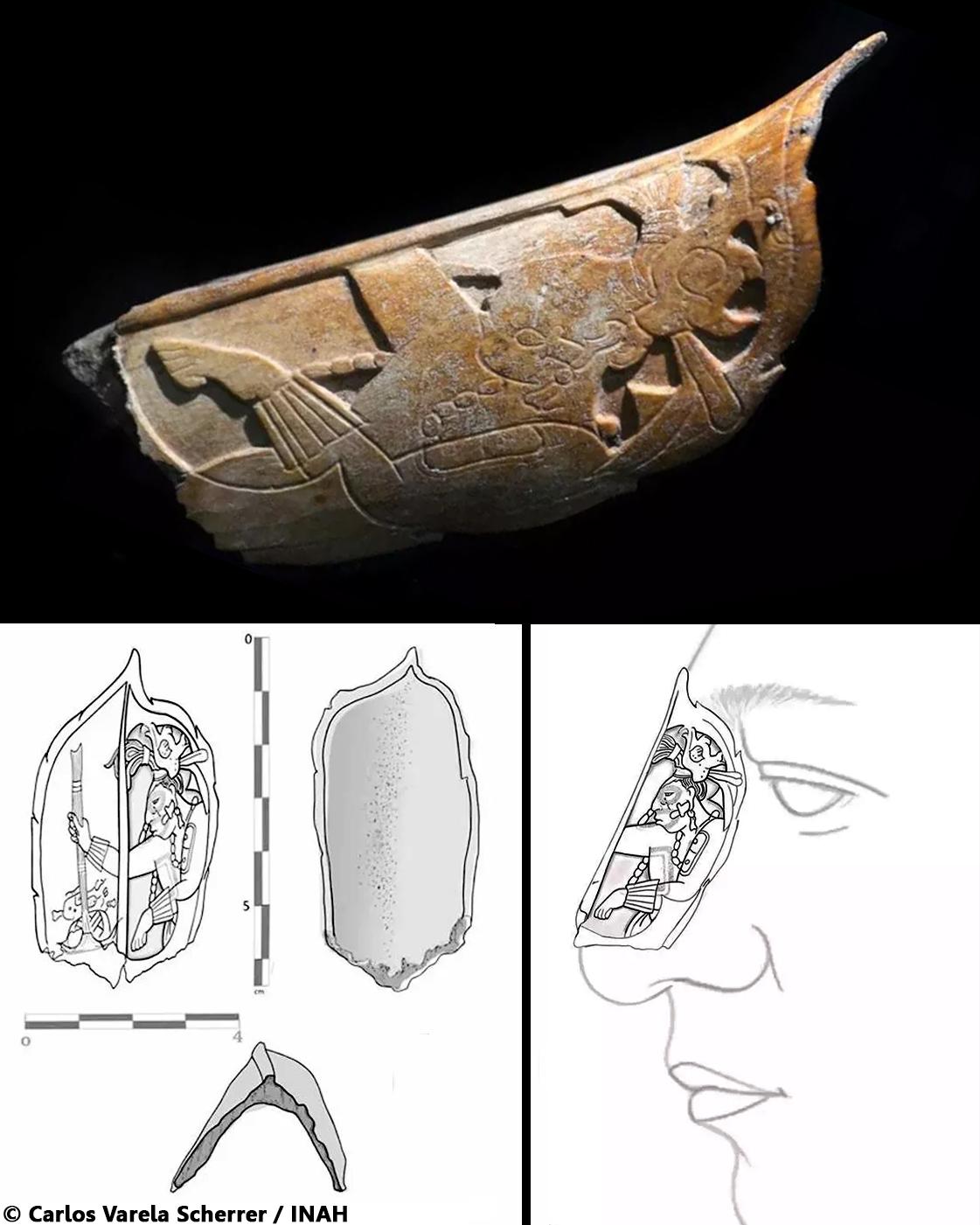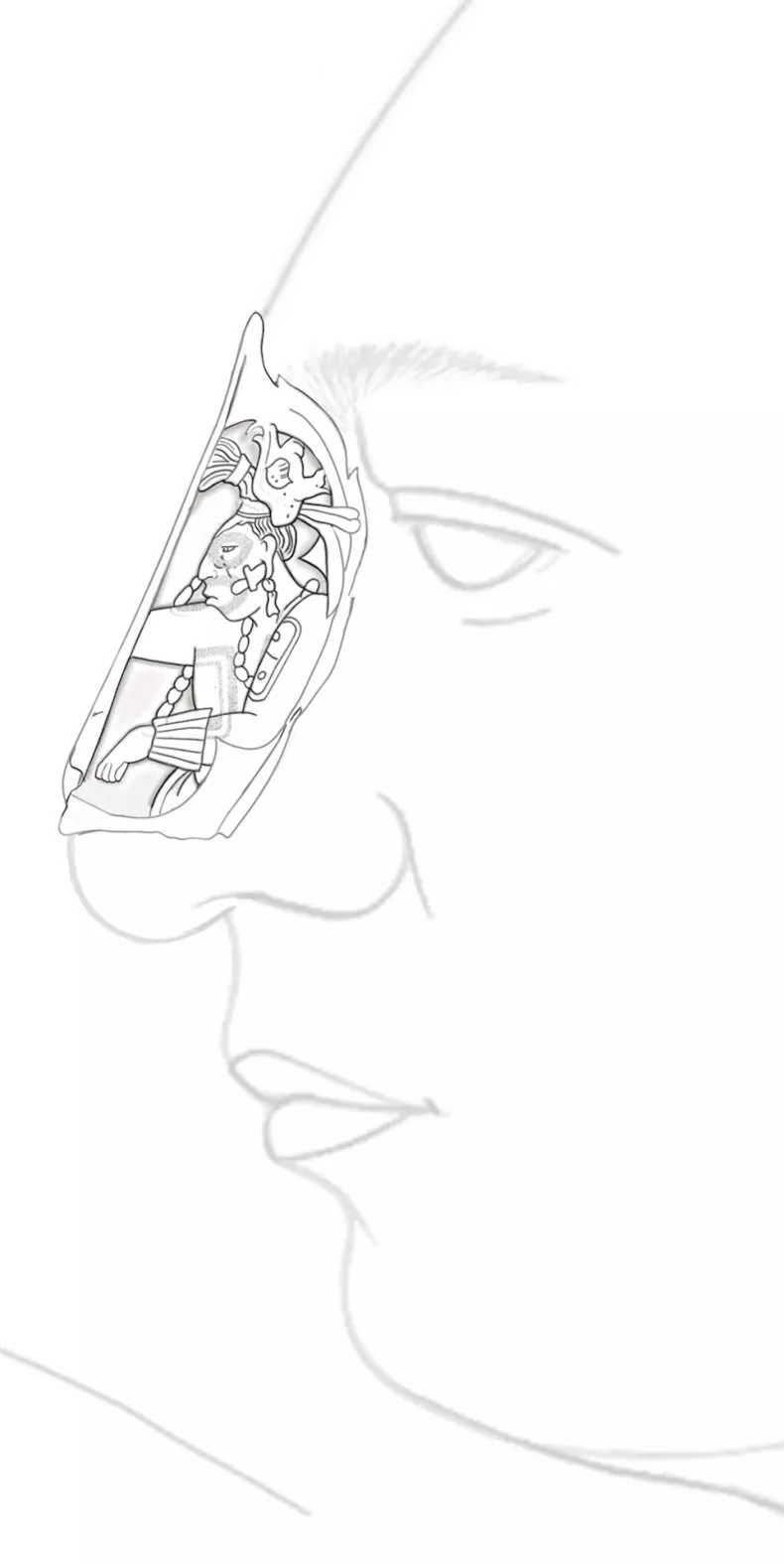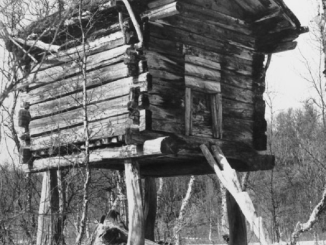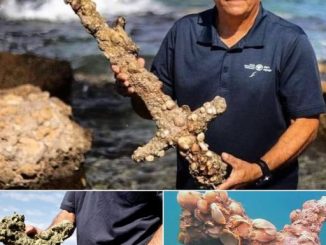
The ancient Maya civilization continues to unveil its secrets as archaeologists make fascinating discoveries at the renowned Palenque ruins in Mexico. Among the latest findings is a remarkable nose ornament crafted from human bone, shedding new light on the rich cultural and artistic traditions of the Maya people. In this blog post, we delve into the intriguing story behind this unique artifact and its significance within the context of Palenque’s archaeological landscape.

1. The Maya City of Palenque: A Hub of Art and Culture
Palenque, nestled amidst the lush jungles of Chiapas, Mexico, was once a thriving center of Maya civilization. Home to magnificent temples, palaces, and plazas, the city flourished during the Classic period (ca. 250-900 AD), reaching its zenith under the reign of Pakal the Great. House C, part of Pakal’s grand palace complex, has been the focus of recent archaeological excavations, revealing insights into Maya daily life and rituals.
2. The Discovery: A Nose Ornament Crafted from Human Bone
During excavations at House C, archaeologists made a startling discovery—a meticulously carved nose ornament made from human bone. Measuring just over 6 centimeters long and 5 centimeters wide, the ornament showcases exquisite craftsmanship and attention to detail. The bone fragment used in its creation is believed to be a distal tibia, adding to the artifact’s significance and raising intriguing questions about its cultural and symbolic meaning.
3. Unraveling the Mysteries: Cultural Significance and Ritual Practices
The nose ornament unearthed at Palenque offers valuable insights into Maya artistry and religious beliefs. In Maya culture, body adornment played a central role in rituals and ceremonies, serving as symbols of status, identity, and spiritual connection. The use of human bone in the ornament suggests a deep reverence for ancestral spirits and the cycle of life and death—a theme prevalent in Maya cosmology and mythology.
4. Preserving the Past: Archaeology and Heritage Conservation
As archaeologists continue to excavate and study the artifacts of Palenque, efforts are underway to preserve and protect this invaluable cultural heritage for future generations. Through meticulous documentation, conservation, and public engagement initiatives, we honor the legacy of the ancient Maya and ensure that their remarkable achievements are celebrated and safeguarded. By unraveling the mysteries of the past, we gain a deeper understanding of our shared human history and the enduring legacy of civilizations like Palenque.
In conclusion, the discovery of the Maya nose ornament made of human bone at Palenque offers a tantalizing glimpse into the artistic, spiritual, and cultural practices of one of the world’s most fascinating civilizations. As we marvel at the intricate craftsmanship and symbolism of this ancient artifact, we are reminded of the enduring legacy of the Maya people and the importance of preserving and interpreting their rich cultural heritage. Through archaeology and heritage conservation, we continue to unlock the secrets of the past, enriching our understanding of the human experience across time and space.


